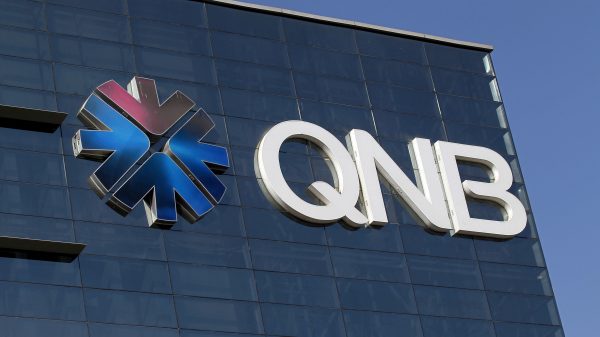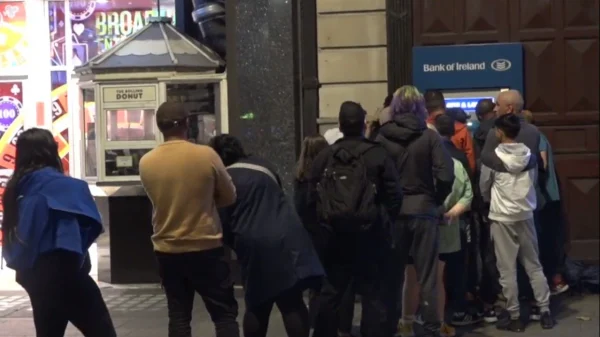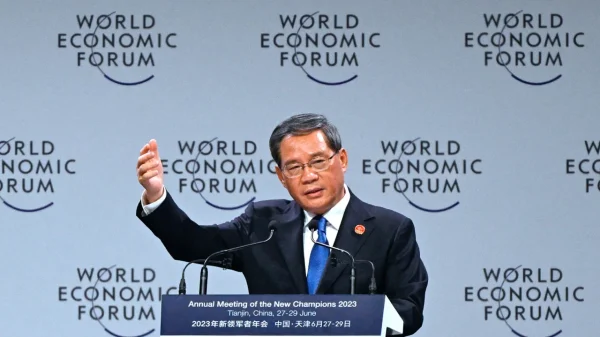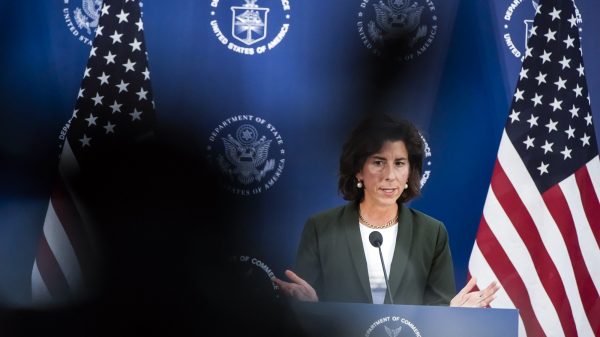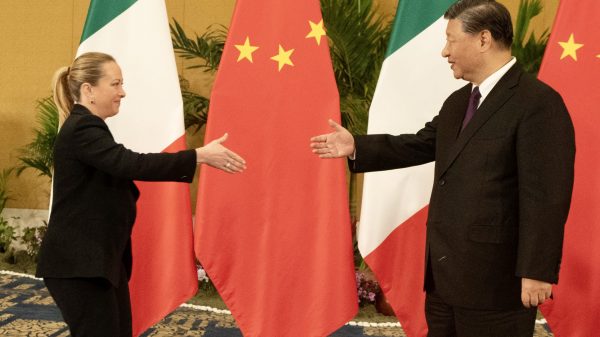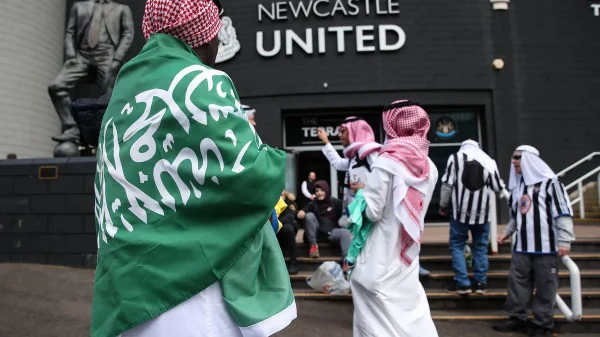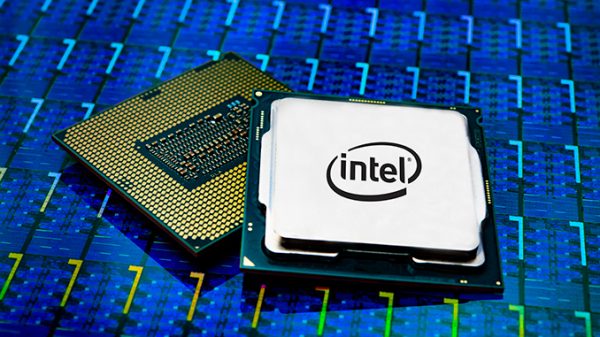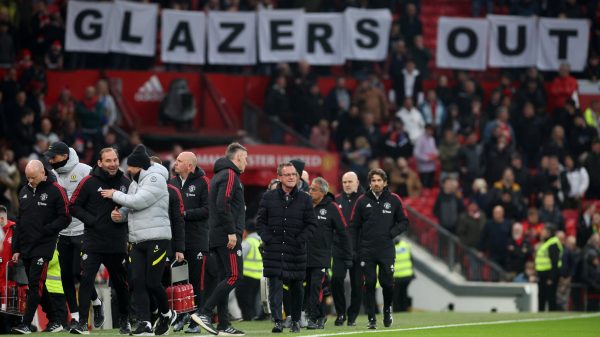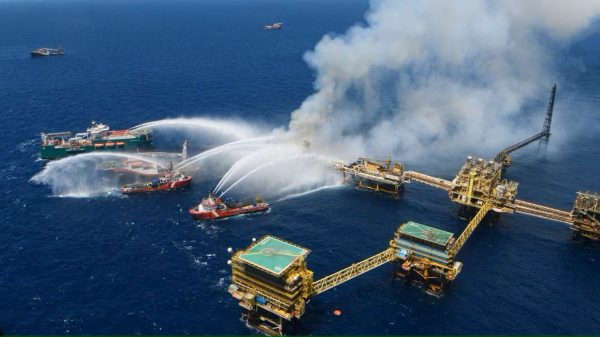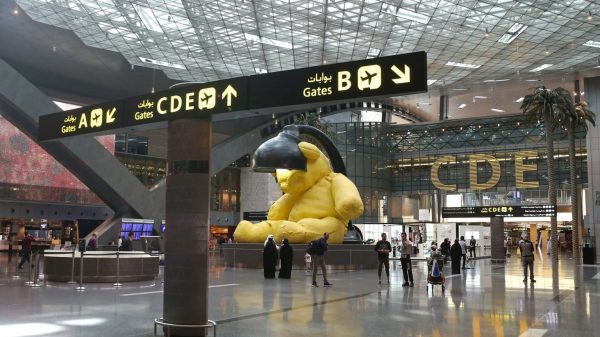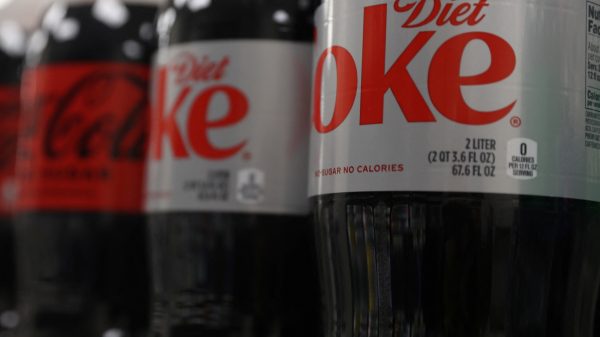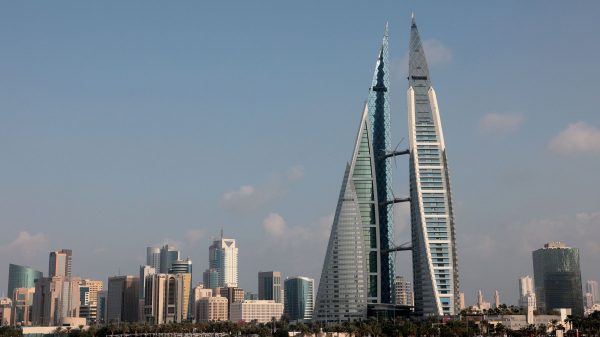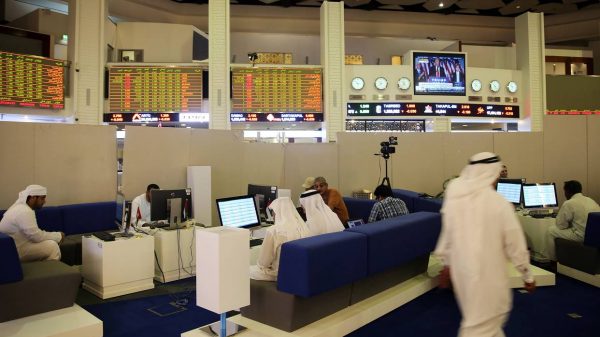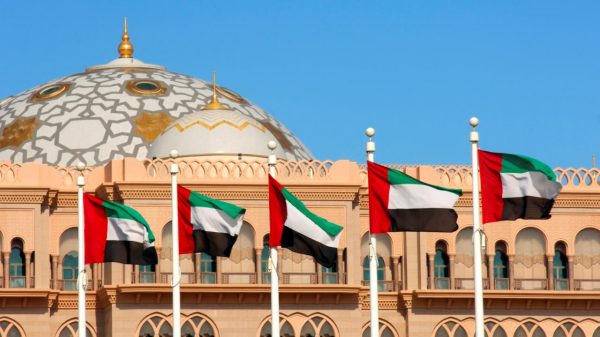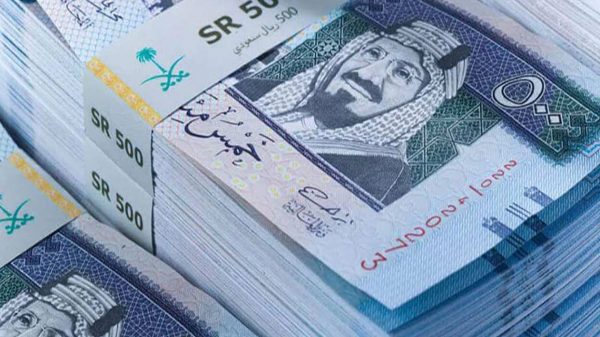-
During a press conference at Joint Base Anacostia-Bolling, US Ambassador to the United Nations Nikki Haley speaks about evidence of Iran’s destabilizing activities in the Middle East and Iran’s effort to cover up continued violations of UN resolutions. Department of Defense -
An Iranian unmanned aerial attack vehicle on display at Joint Base Anacostia-Bolling. Serial numbers and markings were noted as evidence of the origin of the drone. -
The ballistic missile components on display at the hangar at Anacostia-Bolling. -
Numbers mark features that identify an Iranian Qiam-class ballistic missile section. The missile section was recovered from a missile fired into Saudi Arabia by Yemen’s Houthi rebels. Department of Defense -
An embossment representing Iranian company Shahid Bagheri Industries shows an Iranian ballistic missile remnant on display at Joint Base Anacostia-Bolling in Washington, DC. Department of Defense -
A poster with details on Iran’s unmanned aerial vehicles. -
A sign explains how Iranian Qiam-class ballistic missile remnants are identifiable by their markings. -
One of nine valves found on Iranian Qiam-class short range ballistic missile remnants recovered from attacks on Saudi Arabia provides evidence of its origin, according to the DOD. DOD -
Remnants of Iranian Qiam-class missile guidance components from two missiles fired into Saudi Arabia from Yemen’s Houthi rebels in 2017. -
The stamped acronym of the Iranian state-owned-and-operated Shahid Hemmat Industries Group appears on an Iranian Qiam-class missile-guidance component remnant. DOD -
A sign provides details about Iranian Qiam-class missile guidance components on display at Joint Base Anacostia-Bolling in Washington, DC, December 12, 2017. The sign is part of a multinational collection of evidence proving Iranian weapons proliferation in violation of United Nations resolutions 2216 and 2231. DoD photo. -
A poster with details of a Houthi rebel attack on a Saudi Arabian frigate using an autonomously navigating small boat packed with explosives in 2017. -
Autonomously navigating boat components from the Shark-33 robot suicide boat.
In a presentation that echoes assertions by another administration that Iraq was concealing weapons of mass destruction, US officials have created a display of evidence that the Trump administration hopes will trigger further action against Iran. In a hangar at Joint Base Anacostia-Bolling in Washington, DC, today, Department of Defense (DOD) officials accompanied by US United Nations Ambassador Nikki Haley put on display debris from what they claim are Iranian-built ballistic missiles and other weapons recovered by Saudi Arabia and the United Arab Emirates.
The presentation comes as the secretary general of the United Nations is scheduled to release a report on Iran's lack of compliance with UN Security Council resolutions. Haley says the report "describes violation after violation of weapons transfers and ballistic missile activity. Aid from Iran’s Revolutionary Guard to dangerous militias and terror groups is increasing… Its ballistic missiles and advanced weapons are turning up in war zones across the region. It's hard to find a conflict or a terrorist group in the Middle East that does not have Iran's fingerprints all over it."
And those fingerprints, according to the display presented for the press today in the hangar, are all over the two ballistic missiles and other weapons. The components all bear marks tying them to manufacturers in Iran. This is proof, according to a DOD report, that Iran is illicitly shipping highly destructive weapons to anti-government forces in Yemen for use against Saudi Arabia and its allies in the Gulf as part of its efforts "to sow instability and promote violence throughout the region."
Haley said that the US government had invited representatives from other nations, including "the entire UN Security Council," to see the evidence on display. "And we are inviting all members of Congress to view it. This evidence is part of what has led the US intelligence community to conclude, unequivocally, that these weapons were supplied by the Iranian regime. The evidence is undeniable. The weapons might as well have had 'Made in Iran' stickers all over it."
The ballistic missile fragments were, according to DOD analysis, pieces of two Iranian Qiam missiles. The first targeted the Yanbu terminal—a major Red Sea oil facility on Saudi Arabia's west coast. It was launched July 24 and was not intercepted by Saudi missile defenses. It caused a major fire near the terminal, though there was little detail given at the time by Saudi Arabia about the damage done. The second, launched on November 5, was aimed at King Khalid International Airport near Riyadh; the Saudi Arabian government claimed to have intercepted the missile with its Patriot missile batteries, but other reports suggest that the Patriot system may have hit the falling booster of the missile after it had separated from the warhead.
Saudi Arabian officials have suggested they may consider the attack on the airport as an "act of war" by Iran. President Donald Trump has blamed Iran for the Riyadh attack, but Mohammad Ali Jafari, the chief of Iran's Islamic Revolutionary Guard Corps, disputes the claim.
Ansar Allah—the Houthi insurgent group—claimed that the missiles were a domestic version of the Iranian-built Qiam, a variant of the Russian R-17M ("Scud-C") ballistic missile. The Qiam is essentially a Scud-C without control fins. But Defense Department experts displayed components from the missiles with manufacturer stamps that show they were of Iranian origin, as were the other weapons on display.
Iran is one of the few nations with an active missile development program that is not a member of The Hague Code of Conduct Against Missile Proliferation, an export control regime that prohibits the export of ballistic missile systems. (There are 138 member states, including the US.) But that's not uncommon for the region—Israel, Pakistan, Egypt, and Saudi Arabia are all non-signatories as well.
However, Iran has been specifically sanctioned by the UN Security Council for its illegal exportation of ballistic missile systems because of its nuclear program. Iran's ballistic missile development program is considered by some Security Council member states (including the US, Japan, and Sweden) to be against the spirit of the Security Council's resolution 2231, which specifically calls out nuclear weapons development to be "destabilizing." Russia and China have largely shrugged off the continued development, arguing that it's not a violation unless the missiles are designed specifically to deliver nuclear warheads. The resolution does not prevent Iran from other missile and space development.
Suicide drones and robo-boats
Other evidence presented by the DOD included Iranian uncrewed vehicles designed to act as weapons. One, the Qasef-1 uncrewed air vehicle, is a surveillance drone that "can be used as a one-way attack drone," said Defense Department spokesperson Laura Seal, "diving on targets Kamikaze-style and detonating its warhead upon impact. It is a member of the Ababil UAV family, designed and produced by the Iranian government.”
The other autonomous weapon of Iranian origin presented was the Shark-33 "explosive boat"—or rather, several components of it. The Shark is a high-speed small boat that carries an anti-ship payload.
"There are more than half a dozen pieces of evidence demonstrating that these components are directly traceable to Iran," Seal said. "What makes the Shark 33 so dangerous isn't just that it can explode. It has a guidance system allowing it to track and hit a moving target without an operator on board, so the boat can be deployed to blow up a ship without sending someone on a suicide mission. The computer and sensors serve as that unmanned guidance system for the Shark 33—and they are supplied by Iran."
DOD officials say that the Shark-33 was used to attack a Saudi naval vessel, the frigate HMS al Madinah, off Yemen in February, blowing a six-and-a-half-foot hole in its side and killing two crew members. It had previously been thought that the Houthis had made the attack with an anti-ship missile.
Listing image by Department of Defense
[contf] [contfnew] 
Ars Technica
[contfnewc] [contfnewc]
The post DOD shows components proving Iran provided missiles fired at Saudi Arabia appeared first on News Wire Now.



